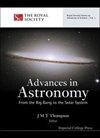接触二元MT-Cas中的传质和本征光变率
IF 1.2
4区 物理与天体物理
Q3 ASTRONOMY & ASTROPHYSICS
引用次数: 1
摘要
2013年12月,首次对接触二元MT Cas进行了CCD光度测量。F8V的光谱类型是根据2018年10月22日观测到的低精度光谱确定的。利用Wilson-Devinney编码,分别从VRc光曲线(lc)和AAVSO和ASAS-SN的数据推导出光度解。结果表明,MT - Cas为w型弱接触双星,质量比q=2.365(±0.005),填充因子f=16.6(±1.2)%。2013年的不对称lc是由更大质量成分上的一个黑点模拟的。通过对(O-C)曲线的分析,发现轨道周期可能以dP/dt=1.12(±0.09)×10-8d yr-1的速率长期增加,这可能是质量从质量较小的组分向质量较大的组分转移的结果。随着质量的传递,MT - Cas可能会演变成由TRO理论预测的断接触结构。本文章由计算机程序翻译,如有差异,请以英文原文为准。
Mass Transfer and Intrinsic Light Variability in the Contact Binary MT Cas
First CCD photometry for the contact binary MT Cas is performed in 2013 in December. The spectral type of F8V is determined from the low-precision spectrum observed on 2018 Oct 22. With Wilson-Devinney code, the photometric solutions are deduced from VRc light curves (LCs) and AAVSO’s and ASAS-SN’s data, respectively. The results imply that MT Cas is a W-type weak-contact binary with a mass ratio of q=2.365(±0.005) and a fill-out factor of f=16.6(±1.2)%, respectively. The asymmetric LCs in 2013 are modeled by a dark spot on the more massive component. By analyzing the (O-C) curve, it is discovered that the orbital period may be undergoing a secular increase at a rate of dP/dt=1.12(±0.09)×10-8d yr-1, which may result from mass transfer from the less massive component to the more massive one. With mass transferring, MT Cas may evolve into a broken-contact configuration as predicted by TRO theory.
求助全文
通过发布文献求助,成功后即可免费获取论文全文。
去求助
来源期刊

Advances in Astronomy
ASTRONOMY & ASTROPHYSICS-
CiteScore
2.70
自引率
7.10%
发文量
10
审稿时长
22 weeks
期刊介绍:
Advances in Astronomy publishes articles in all areas of astronomy, astrophysics, and cosmology. The journal accepts both observational and theoretical investigations into celestial objects and the wider universe, as well as the reports of new methods and instrumentation for their study.
 求助内容:
求助内容: 应助结果提醒方式:
应助结果提醒方式:


